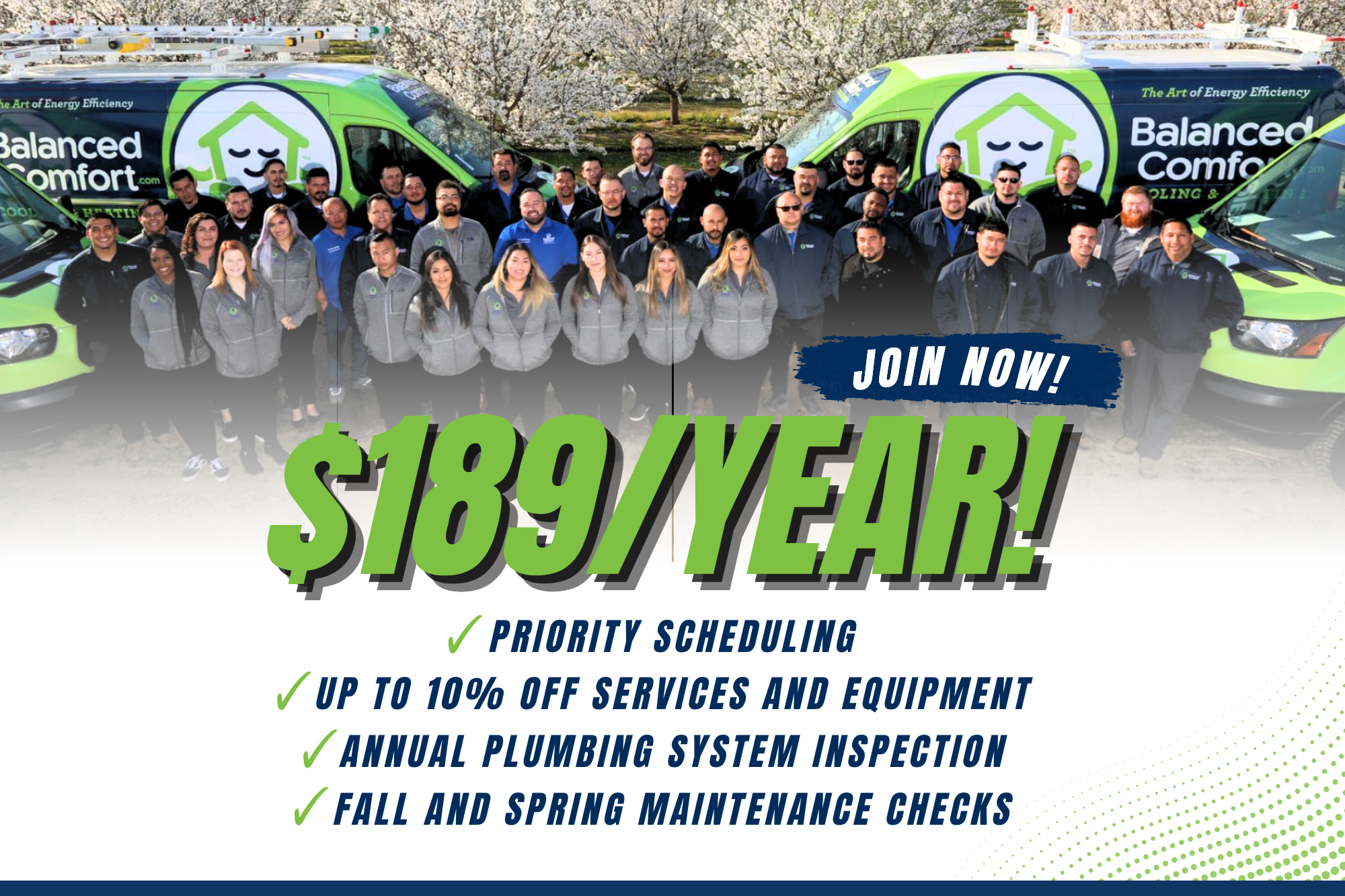Title 24 Compliance HVAC Requirements
Title 24 Compliance HVAC Requirements
Over 4,000 5-Star Review
Real Solutions, Real Savings

Valley’s #1 Home Comfort Membership
Join for just $189/year and enjoy priority scheduling, seasonal maintenance, and exclusive member discounts!

Huge Rebates & Credits*
Get up to $10,000 in rebates and credits on select HVAC and plumbing services. Call for details.

Get Up to $2,500 Off*
Up to $2,500 off a new HVAC system. Includes a Free Smart Thermostat for better comfort and energy savings!
A balanced home is a happy home. If you are feeling overwhelmed by the complexity of Title 24 Compliance HVAC Requirements, Balanced Comfort is ready to help. Our specialists understand the Building Energy Efficiency Standards and know how each rule affects your design, equipment selection, and overall project path. Your search for dependable compliance support ends here. Visit our contact page today to learn more about our membership plan, which includes a 10% discount on new HVAC services.
Trustworthy Experts Who Treat Your Home With Care
Our friendly team treats every project with precision and respect. We review your plans carefully, communicate clearly, and keep you updated throughout the verification process.
Fast, Reliable Services On Your Schedule
We know building delays are costly. That is why we provide same-day scheduling whenever possible, work around your project timeline, and complete our evaluations efficiently.
Affordable Solutions, No Unnecessary Upsells
Balanced Comfort believes in clear recommendations only. We offer financing options and discounts that keep compliance and HVAC improvements within your budget.
Service You Can Trust, Quality You Deserve
When you need clarity on Title 24 Compliance HVAC Requirements, you deserve specialists who understand both energy standards and practical HVAC design. Our team reviews your mechanical plans, identifies what needs to be adjusted, and explains your best path forward. Whether you need minor corrections or a full HVAC redesign, we help you resolve issues with as little stress as possible.
HVAC Design Support Without the Hassle
HVAC code requirements can feel confusing. Balanced Comfort guides you through the steps so you avoid costly setbacks. We check for load calculation accuracy, equipment efficiency compliance, proper airflow strategies, and duct placement requirements. Our goal is to help you avoid errors that slow your inspection process.
Advanced Diagnostics for Title 24 Compliance HVAC Requirements
We use accurate modeling tools to verify that your project meets current standards. Whether your plans need updated sizing, new insulation details, or sealed duct pathways, we bring clarity to each part of your compliance report. Our specialists eliminate guesswork so you can move forward with confidence.
Precision Driven HVAC Solutions for Code Compliance
Your building’s performance relies on correct HVAC design. Balanced Comfort focuses on solutions that improve comfort, reduce energy use, and support long-term code alignment. No gimmicks.
Title 24 Compliance HVAC Requirements: What You Need to Know
Builders, architects, and contractors reach out daily with questions about the standards. As a trusted compliance provider, we know you want clear, simple answers that help you move forward without delay. Below are the most common questions we receive.
The Title 24 Compliance HVAC Requirements Near Me You’ve Been Searching For
When a project stalls because of compliance issues, you do not want to wait days for help. You need specialists who understand the rules, stay current with California standards, and know how to resolve HVAC questions quickly. That is what Balanced Comfort provides. Our team lives and works in the communities we serve, and we are proud to help keep California building better every day. Visit our contact page to get started.
